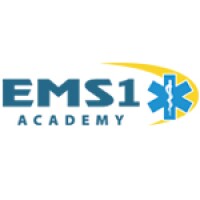The EMS1 Academy features “Module 10: Airway Management,” a 1.5-hour course for EMTs. Visit the EMS1 Academy to learn more and for an online demo.
By Sarah Calams, EMS1 Associate Editor
Supraglottic airways are a valuable airway management tool. Which methods of training do you use to refresh your knowledge of and ability to use supraglottic airways? Furthermore, how often do you complete refresher training?
We asked these questions, along with six others, in a survey to help us gain a better understanding of how EMS providers train to use supraglottic airways.
The majority of respondents (46 percent) were paramedics. Thirty-one percent were EMTs and 15 percent were AEMTs.
Sixty-two percent of respondents use low-fidelity mannequins to refresh their knowledge and ability to use supraglottic airways, while 24 percent said they use high-fidelity mannequins. Classroom lecture accounted for 58 percent of responses and class review and discussion came in at 26 percent. Other responses included cadaver labs, field use and hands-on mannequins.
Here’s the top three takeaways on how agencies are staying up to date on supraglottic airway training:
1. Supraglottic airway devices vary from department to department
An overwhelming majority of respondents (76 percent) said they are trained and authorized to use King LTS-D, while 43 percent said they use i-gel. Other supraglottic airway devices included ET tubes and SALT tubes.
2. EMS agencies do not consistently complete refresher training
Fifty percent of respondents received two or more hours of initial training, and 25 percent received one hour. Only four percent said they received no initial training.
However, when it comes to refresher training, just 35 percent of respondents complete annual refresher training. A surprising 16 percent never complete refresher training on supraglottic airways.
3. There is room for improvement in supraglottic airway training
Fifty percent of respondents noted they are not required to perform an annual competency check on their ability to use a supraglottic airway.
The question, “What more would you like to know about supraglottic airways” sparked a number of inquiries. Some of the top responses included:
- Proper depth for insertion.
- Tricks or techniques to get the airway in smoother.
- How to deal with issues during placement.
- Benefits of different SGAs and how they compare to the ET tube.
- Case studies showing improved success in pediatric patients.
- Advances in training and technology.
- How to use them with pediatric patients.
Despite the deficits in training, most respondents agreed that they are prepared to use supraglottic airway devices because of their training and continued education. Forty-four percent of respondents strongly agree that they are prepared to use the devices, while 3 percent said they disagreed.










